This article was co-authored by Anthony Stark, EMR. Anthony Stark is a certified EMR (Emergency Medical Responder) in British Columbia, Canada. With over 11 years of experience, he has worked as an industrial medic and provided urban and rural paramedic services. He currently works for Mountain View Safety Services and previously worked for the British Columbia Ambulance Service. Anthony has a Bachelor of Engineering in Electrical, Electronics, and Communications Engineering from the Georgia Institute of Technology. He has completed the EMP Canada EMT Course and Swiftwater Awareness Training associated with the British Columbia Ambulance Service.
This article has been viewed 114,911 times.
Hydrofluoric acid (HF) burns are serious, and it's important to seek medical attention immediately after a burn even if you don't feel symptoms. Learning about hydrofluoric acid burns and how to treat them can decrease the damage and help keep you safe in the future.
Steps
Treating Skin Contact
-
1Recognize the effects of hydrofluoric acid. Hydrofluoric acid (HF) contact with skin can cause severe chemical burns. Direct contact with HF can cause major damage to your skin tissue, as HF is a corrosive substance that burns. It can also penetrate the skin and cause even further damage under the skin.[1]
- This can be even worse, depending on the concentration of the acid and the length of exposure.
- No matter the concentration, however, the burns may cause a deeper penetration of the underlying skin tissue after a longer time of detection. Any increased time can allow for a burn to become more severe.[2]
-
2Distinguish the categories of burn. There are 3 categories of HF burns. A burn that is grade 1 appears with white burn mark and has surrounding painful redness along the skin.
- A burn that is grade 2 appears with a white burn mark and surrounding painful redness, but also demonstrates blistering and edema, which is leakage of intra-cellular fluids outside of damaged cellular tissue.
- A burn that is grade 3 appears in the same way as grade 2, with the addition of blistering, and necrosis, which is cell tissue death.
- Cell tissue death is seen as discolored blue or black tissue around the burn. [3]
Advertisement -
3Remove all contaminated clothing immediately. If there is any part of your clothing that has been saturated with HF, remove it immediately from your body or any portion of your skin. This will prevent more acid from touching the skin, as well as stop continued exposure that may cause more serious burning.
- Make sure that the clothing comes into contact with as little skin as possible as it is removed. Do not touch clothing directly with bare skin if you believe it has also been contaminated with HF.
- Use gloves, masks, and gowns, if possible.
-
4Flush the burned area. If you come into contact with HF, flush the burned area under a safety shower or suitable hose. Orient the burned area so that water runs down and off your skin. Make sure that the water coming into contact with the affected area does not come into contact with any other part of your body.
- This constant flow of cool water should not overly cold but cool enough to soothe the burn.
- Continue flushing the area for fifteen or more minutes.
-
5Have another person call for medical assistance. HF burns are very serious and can lead to many systemic issues and even death. You need to get help as soon as possible because HF burns require expert medical attention regardless of how you feel or what you believe is necessary. Have someone else call for you while you deal with preventing continued exposure to the acid.
- Seek medical attention as soon as possible from the time of exposure to reduce the time the acid can continue to linger and cause damage.[4]
-
6Treat the wound after flushing it. You can do a few things after flushing your burn. Massage a generous amount of calcium gluconate gel into and around the burn. Keep applying gel for at least twenty minutes. This should be the first line of care if available after extensive rinsing with water.
- You can also use hexafluorine, which is a chemical compound that has also been used extensively for HF burns. However, some studies have not found it to be any more effective in reducing electrolyte disturbances than proper rinsing with water.[5]
- Magnesium hydroxide-containing antacids can also be used with some benefit if calcium gluconate is not available. Look for common antacid brands such as Mylanta.[6]
-
7Get treated. Seeking medical care from professionals will help assess long-term side effects of the burn. The goal of treatment is reduce the effects of HF burns while simultaneously controlling the pain from exposure. Prior to discharge, your doctor will assess your electrolyte balances with a blood test, test for any heart palpitations and arrhythmias, and review your Echocardiogram (ECG) to make sure it is normal.
- Your doctor may continue with similar tests during follow-up to make sure that long-term symptoms do not develop after you have been discharged.
- If exposure to HF is only on the fingers, you will likely be discharged with calcium gluconate gel and instructed to wear a latex glove after applying the gel. This will help to maximize the efficacy of the gel by increasing absorption. [7]
- Your doctor should follow-up with you at least once after 24 hours from the time you are discharged. This follow-up may be in person or over the telephone, depending on the severity of your exposure and the doctor's judgment.
Treating Eye Contact
-
1Recognize the symptoms. If your eyes are exposed to HF, they will experience rapid symptoms. If your eyes only have mild exposure, expect rapid irritation and possibly pain. This may be followed by a clouding of the cornea of the eye, which may be reversible.
- If severe exposure occurs, expect a rapid onset of pain and damage to the cornea. The cornea may degrade and the eye may swell. Clouding of the eye may become permanent as well as any other visual defects in the eye. [8]
-
2Flush the eyes with water. As soon as your eyes are exposed to HF, flush them with large amounts of cool, running water for at least thirty minutes. This will flush out the acid and help prevent continued damage to the eyes. If only one eye has been contaminated, be sure to not wash acid into the other eye. Keep your eyelids apart and away from the eyeballs while washing.
- Tilt your head to the side so that water runs off your eye from the side closest to your nose towards your temples. This will prevent the contaminated water from rinsing back into your eye, nose, mouth, or other vital areas on the face. [9]
-
3Seek medical attention. Once you wash your eyes out, seek medical attention immediately. Ideally, you should see an eye specialist so he or she will know the best way to treat you. This cannot be reiterated enough. HF is a highly reactive substance and can cause severe damage, visual defects, and blindness.
-
4Apply an ice pack. On your way to the emergency room, you should apply an ice pack to your eyes. Applying an ice pack to the affected area may lessen the effects of the HF, while also helping to alleviate the painful symptoms.[10]
-
5Get treated by an eye doctor. Once you get to the emergency room or eye doctor, he or she will assess the damage in order to limit the long-term effects to your eyes. You will most likely continue to receive flushing of the eye, as well as topical tetracaine ointment and a 1% calcium gluconate flush.
- The goal of immediate treatment is to reduce your pain, neutralize the effects of burns, and then to assess and come up with a treatment plan based on the outcome.
-
6Have tests done. Prior to discharge, your doctor will assess your electrolyte balances with a blood test, test for any heart palpitations and arrhythmias, and review your Echocardiogram (ECG) to make sure it is normal.
- Your doctor may continue with similar tests during any follow-up to make sure that long-term symptoms do not develop after you have been discharged. Just like with a skin burn, your doctor should follow-up with you at least once after 24 hours from the time you are discharged, which can be over the phone or in person depending on the severity of your case.[11]
Treating Inhalation Burn
-
1Recognize the symptoms. The symptoms for inhalation of HF can be complication because the symptoms for mild and severe inhalation will overlap. The symptoms for mild exposure may be include irritation of the mucous membranes in the nose and throat, coughing, burns on the passageways, and narrowing of airways, which will cause difficulty breathing.
- Symptoms for severe exposure include all of the above as well as an immediate narrowing of the airways, along with pulmonary edema, which is a build-up of fluid in the lungs. Lung collapse can also occur.[12]
-
2Immediately remove the person from the HF source. You will likely not be able to check yourself for inhalation of HF because of the symptoms. However, if you come upon someone who has or might have inhaled HF, check the affected person's vital signs.
- Check for a pulse and respiratory breathing on him and make sure his airway is open so that he can breathe.
- Continue to monitor the individual for any observable symptoms and do your best to alleviate those symptoms as professional medical attention is obtained.
- If the person looks as though they are having a hard time breathing, administer oxygen if available.
- Artificial respiration such as CPR is necessary and should be administered by trained professionals if breathing has stopped. [13]
-
3Seek medical attention immediately. Inhalation exposure is rapidly lethal, which means you need to seek medical attention as soon as possible. Inhalation of HF can cause serious damage and treatment should be done in a medical setting because there is little to no effective treatment outside of a clinical setting.
- While there is a lot of literature and research available about HF exposure to the skin, inhalation exposure has had relatively little research completed. The process of treating HF inhalation injury is highly complex, and more experimental research is still needed to learn proper care techniques.[14]
-
4Get treatment at the hospital. If inhalation HF is suspected, time is of the essence and medical attention must begin as soon as possible.[15] Your doctor may do imaging scans and spirometry to assess any damage or decreased functioning of your respiratory system.
- Spirometry aims to determine your ability to utilize your expected lung capacity and will involve blowing into a tube to measure your effective lung capacity. You will be tested on your ability to inhale, exhale, and the rate at which you can achieve these actions.
- Just as with other HF exposure, your doctor will take a blood test to check your electrolyte balances, look for any arrhythmias or heart palpitations, and will review your Echocardiogram (ECG) to check for any abnormalities. Your doctor will also follow up within 24 hours of discharge by phone or in person, depending on your case.[16]
Treating Ingestion
-
1Recognize symptoms of ingestion. Ingestion can lead to many symptoms, and it can be complicated since symptoms based on systemic exposure cannot be ruled out. Exposure through ingestion can lead to nausea, vomiting, burns to the mouth and airways, and abdominal pain. You may also experience necrosis of areas of the stomach and digestive tract, which can cause severe pain due to localized tissue death.
- You may also suffer gastric bleeding, which is accompanied by an inflammation of the stomach.
- Pancreatitis can also be a symptom, which is an inflammation of pancreas that results from internal digestive tract exposure to HF.[17]
-
2Drink a lot of water. If you ingested HF, you need to drink a large quantity of water right away. This will help dilute the acid in your system and ease the severity of the damage. Do not induce vomiting. You can also drink some milk. If exposed person is alert, give them 4-8 ounces of milk or water.
- Give no more than 4 ounces of either liquid to a child.
- Be very careful with this kind of exposure. Death has occurred within 90 minutes of ingestion of HF contained in rust remover.[18]
-
3Seek medical attention immediately. Ingestional exposure is life threatening and can cause a lot of permanent damage to organs. Always seek immediate medical attention as soon as you suspect HF exposure. You will likely be started on a treatment regime that will help neutralize the acid, even if you have done it yourself on the way to emergency care.
- You will be carefully monitored for increased effects of the burn over time, as HF burns can damage your body on a varying time scale depending on the concentration and exposure level.
-
4Neutralize the acid. After drinking milk or water and calling for help, it is necessary to attempt to bind certain substances in HF with a neutralizing substance. Take some Tums, which are chewable calcium tablets that can help during HF ingestion. The calcium can help bind the HF in your system.
- If you don't have Tums, try milk of magnesia, Maalox, or other liquid antacid. Drink 4 to 8 ounces of these liquids to help.
- Don't overdo it with the liquids by trying multiple methods. You don't want to induce vomiting. Vomiting can cause the acid to further damage unexposed areas that are undamaged.
-
5Get additional tests. Your doctor will perform additional blood tests to assess any large decreases in calcium due to binding with the ingested HF. This can lead to cardiac problems, including cardiac arrest. A urinalysis will also be done in order to assess your fluid levels. This will help to guide fluid management and help with replenishing of any depleted electrolytes.
- Your doctor will run the same test as with other forms of exposure, which check for electrolyte balance, heart complications, and other lasting issues.[19]
Warnings
- You cannot effectively treat HF exposure on your own. Proper medical equipment, medication, and personnel are required to maximize positive outcome.⧼thumbs_response⧽
- Hydrofluoric acid is corrosive and penetrates tissue quickly, causing pain, nerve, and bone damage. Time is of the essence when exposure is suspected⧼thumbs_response⧽
References
- ↑ http://emedicine.medscape.com/article/773304-overview#a5
- ↑ http://emedicine.medscape.com/article/773304-overview#a5
- ↑ http://emedicine.medscape.com/article/773304-overview#a5
- ↑ http://emedicine.medscape.com/article/773304-overview#a5
- ↑ http://www.ncbi.nlm.nih.gov/pubmed/15461243
- ↑ http://emedicine.medscape.com/article/773304-overview#a5
- ↑ http://emedicine.medscape.com/article/773304-overview#a5
- ↑ http://www.cdc.gov/niosh/ershdb/emergencyresponsecard_29750030.html
- ↑ http://www.cdc.gov/niosh/ershdb/emergencyresponsecard_29750030.html
- ↑ http://emedicine.medscape.com/article/773304-overview#a5
- ↑ http://emedicine.medscape.com/article/773304-overview#a5
- ↑ http://www.cdc.gov/niosh/ershdb/emergencyresponsecard_29750030.html
- ↑ http://www.cdc.gov/niosh/ershdb/emergencyresponsecard_29750030.html
- ↑ http://www.ncbi.nlm.nih.gov/pubmed/18695605
- ↑ http://www.ncbi.nlm.nih.gov/pubmed/18695605
- ↑ http://emedicine.medscape.com/article/773304-overview#a5
- ↑ http://www.cdc.gov/niosh/ershdb/emergencyresponsecard_29750030.html
- ↑ http://www.cdc.gov/niosh/ershdb/emergencyresponsecard_29750030.html
- ↑ http://emedicine.medscape.com/article/773304-overview#a5
About This Article
If you are burned with hydrofluoric acid, remove any contaminated clothing immediately to prevent further burning. Flush the affected skin with cool water for 15 minutes or more while someone else calls for medical attention. If you have calcium gluconate gel, apply it generously to the burn. Otherwise, Magnesium hydroxide-containing antacids, such as Mylanta, can be applied as well. For treating eye exposure to hydrofluoric acid, read more from our EMT reviewer.
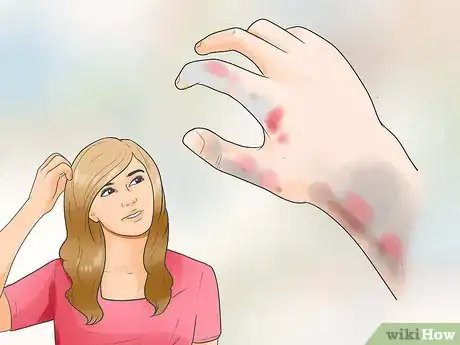
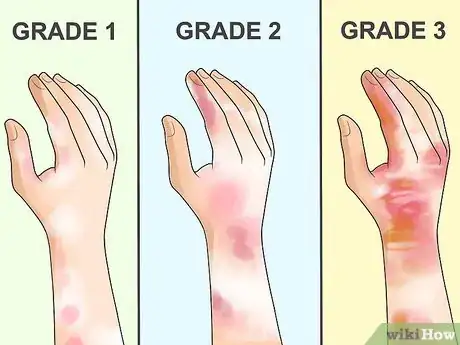
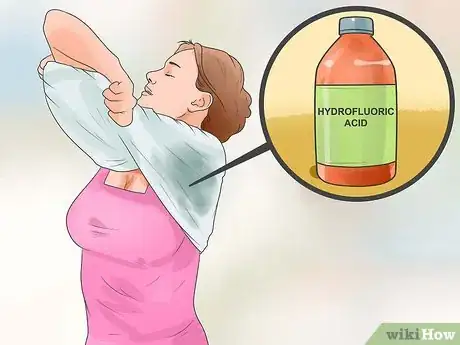
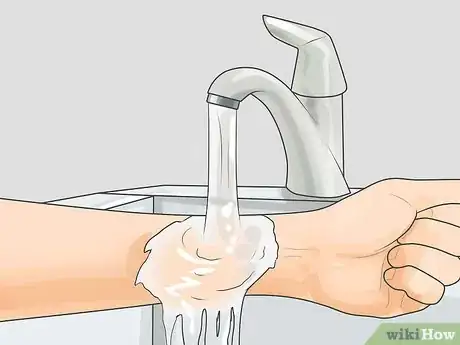
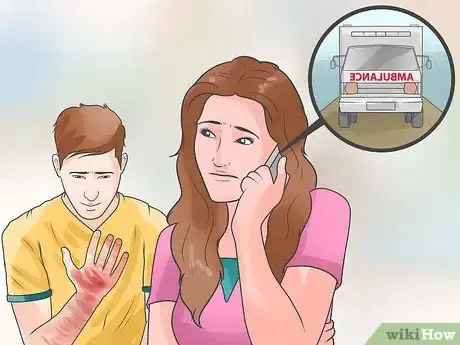
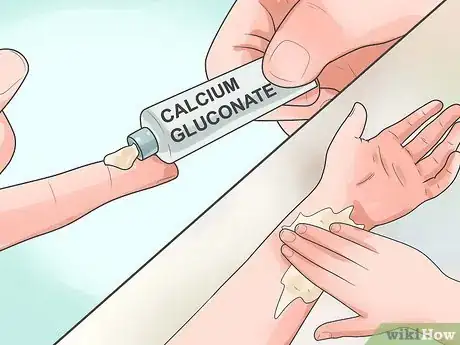
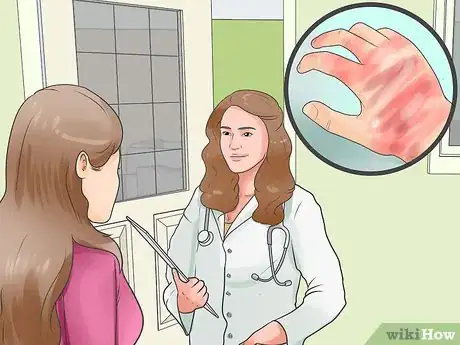
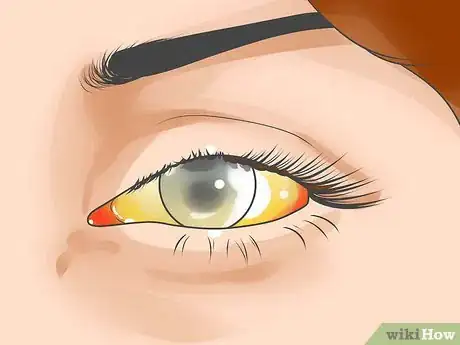
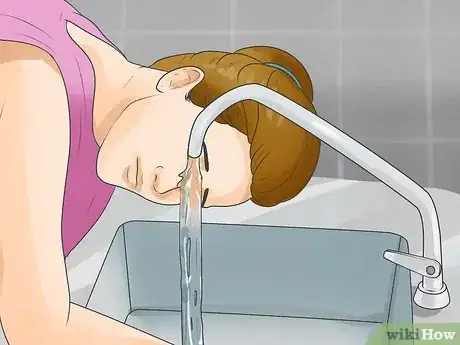
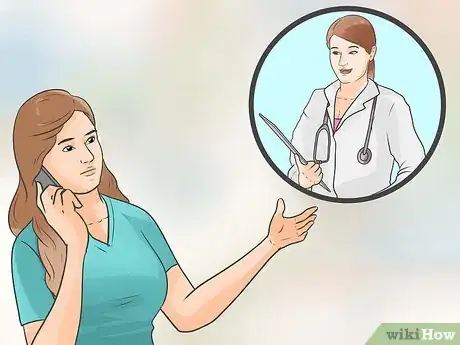
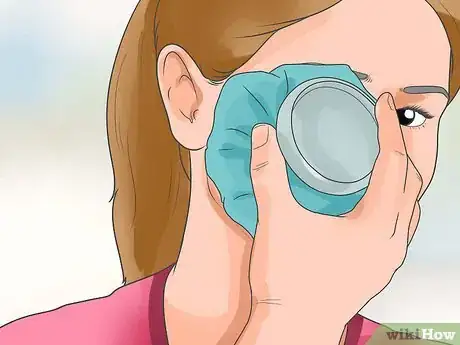
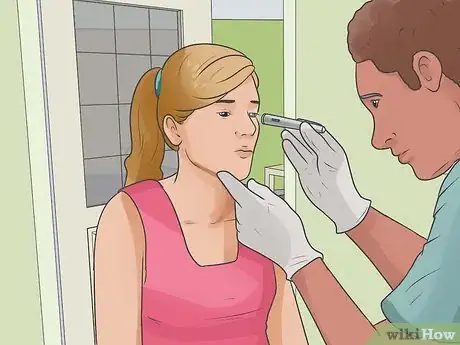
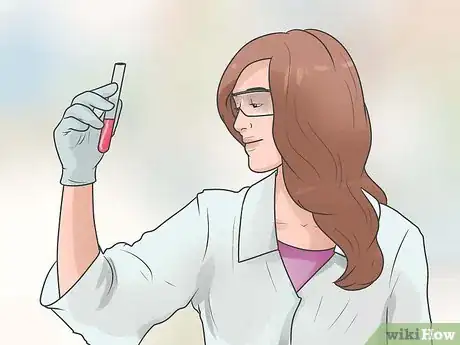
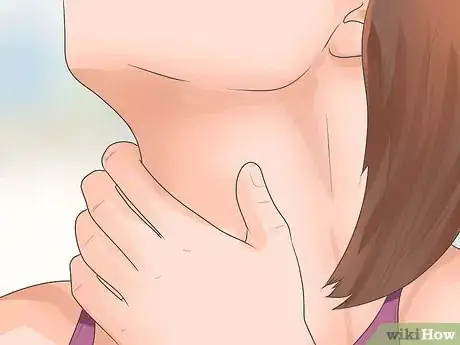
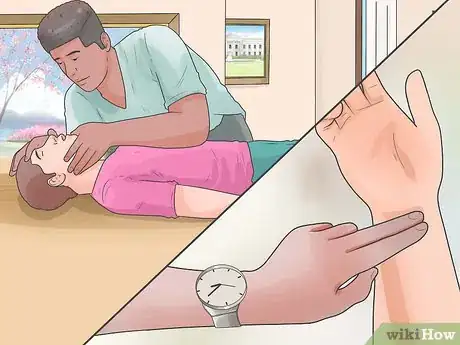
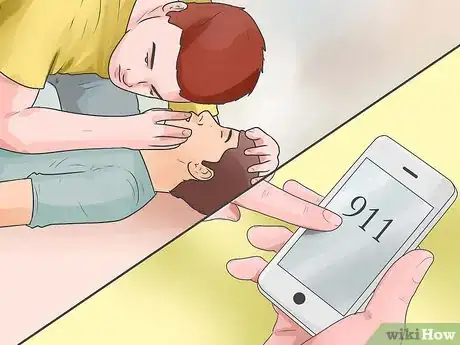
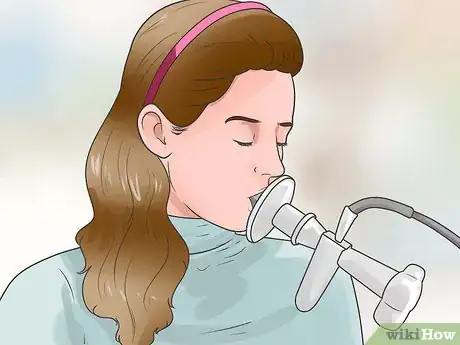
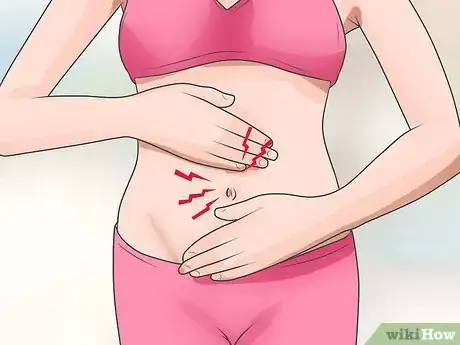
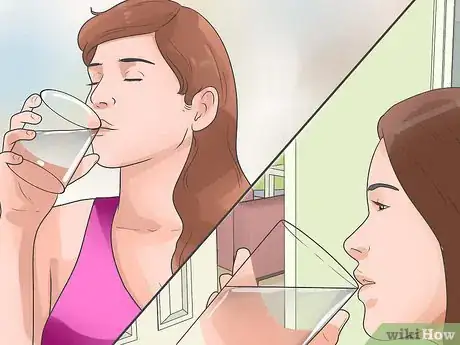
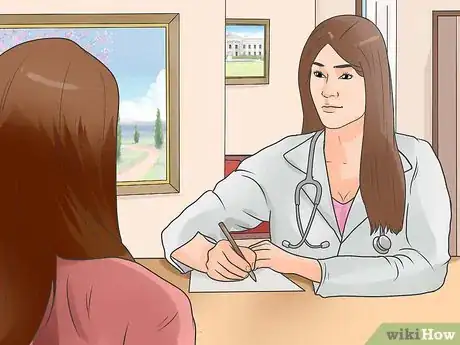
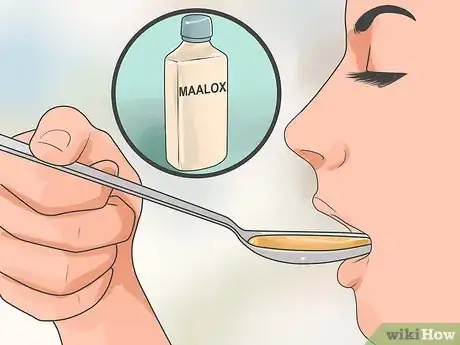
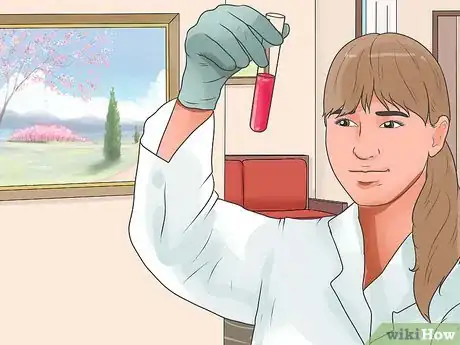

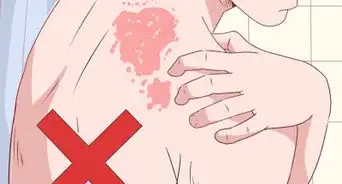




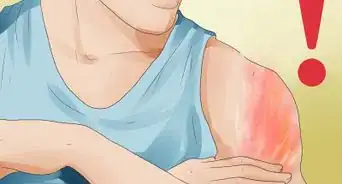


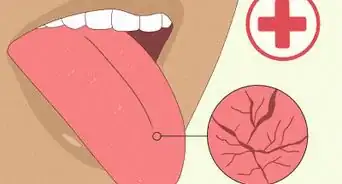

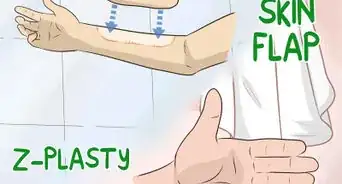











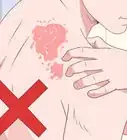

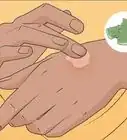



































Medical Disclaimer
The content of this article is not intended to be a substitute for professional medical advice, examination, diagnosis, or treatment. You should always contact your doctor or other qualified healthcare professional before starting, changing, or stopping any kind of health treatment.
Read More...